With the globalization of the music world, there are many instruments are getting popular. Ukulele is one of them.
However, it’s about 250 years old instrument but it had been limited to the Hawaiian region till the 1950s. But thanks to globalization, which introduced this pretty instrument to the rest of the world.
If you are a Ukulele enthusiast you may want to know its history and journey from Hawaii to the rest of the world.
Do you?
Okay, let’s begin exploring the Ukulele.
Contents
What is a Ukulele
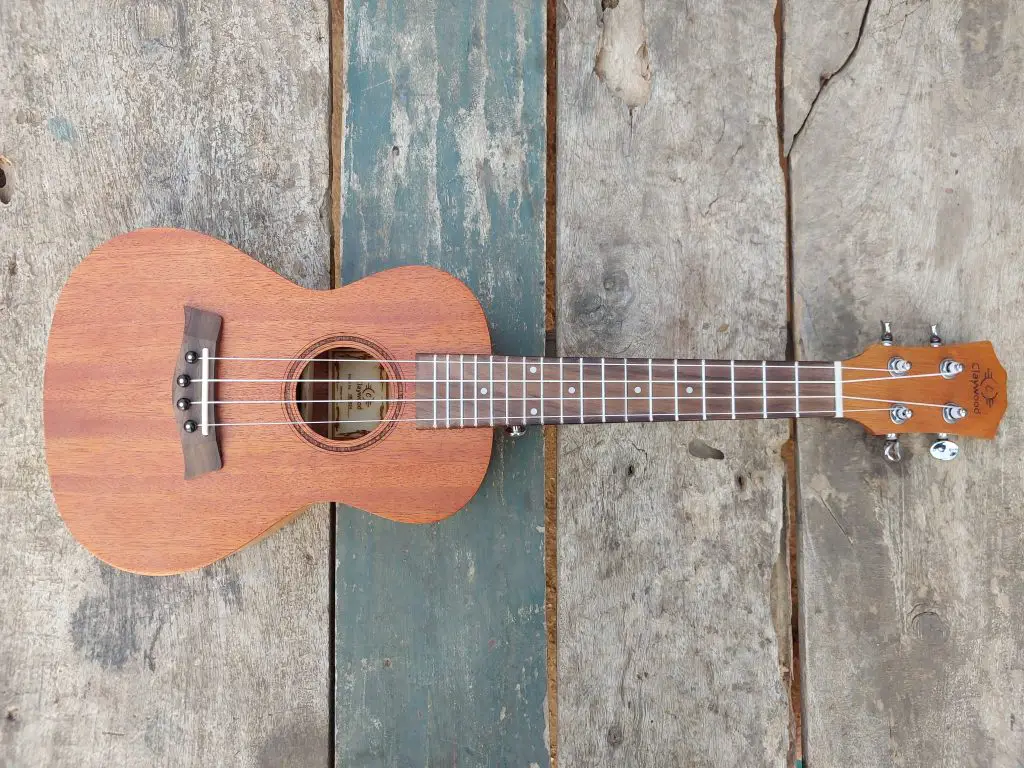
However, this is not what you want to know as you have already a Ukulele player or want to start with it.
BUT, starting all about Ukulele I have to start with the short intro to the Ukulele.
Disclosure: This post may contain affiliate links, which means we may receive a commission if you click a link and purchase something that we recommended. Read more about Affiliate disclosure here.
So, the definition is,
Ukulele is a stringed instrument like a guitar, having 4 strings (generally Nylon strings). It comes in different sizes from 21 inches (Soprano Ukulele) to 29 inches Baritone Ukulele. There are also bigger-size ukuleles available but they are rare.
As it is made of wood, there are different types of tonewoods used to build this instrument and the price actually depends on the quality of the tonewood just like an acoustic guitar.
The nylon strings that are used in the Ukulele when comes reflecting from the tonewood create a pretty, mild, and higher mid-tone which gives it the tag of a country musical instrument.
That’s a short introduction to Ukulele the pretty instrument from Hawaii.
Now, let me take you to the history of the Ukulele.
History of the Ukulele
According to Wikipedia, Ukulele was invented in Hawaii by the Portuguese around the 1880s by three Portuguese immigrants, Manuel Nunes, José do Espírito Santo, and Augusto Dias, who were actually Madeiran cabinet makers.
Ukulele was developed by several other stringed instruments such as Machete, cavaquinho, timple, and rajão.
After developing this instrument, those three migrants started night concerts in Hawaii and got quite popular within two weeks.
BUT, the actual credit to make Ukulele popular goes to king Kalākaua who invited them to the Royal gatherings, and the diplomats who came to those gatherings introduced Ukulele to other parts of Hawaii.
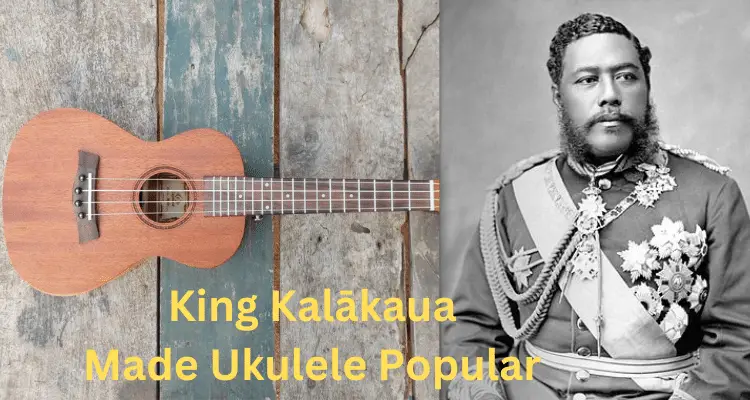
“Ukulele” word has come from the local Hawaiian language which simply means “jumping flea”.
It’s because the strumming hand of the player feels like a “jumping flea” that translates it into a Ukulele.
In the early 1900s, Ukulele started its journey from Hawaii to Canada, North America, Japan, and some other ruler countries. Generally, it was used as a lead instrument at night parties and concerts.
But, during the 1940s-1950s when some Ukulele players such as Israel ‘Iz’ Kamakawiwo’ole and George Formby used this pretty instrument in their records and concerts it started getting popularity in the rest of the world.
This was a short history and the journey from the Ukulele from Hawaii to the rest of the world.
Now, let’s start with an Anatomy of the Ukulele.
Anatomy of a Ukulele
As you know the basic shape and work of a Ukulele are like an Acoustic guitar, the only difference is in shape and the number of strings along with the material used to build the strings.
It is quite smaller than an Acoustic guitar having 4 nylon strings. The tonewood (Hollow wooden box) is made of mahogany, koa, spruce, cedar, etc.
Fretboard is quite smaller than the guitar. Obviously, the tuning is also different in the Ukulele.
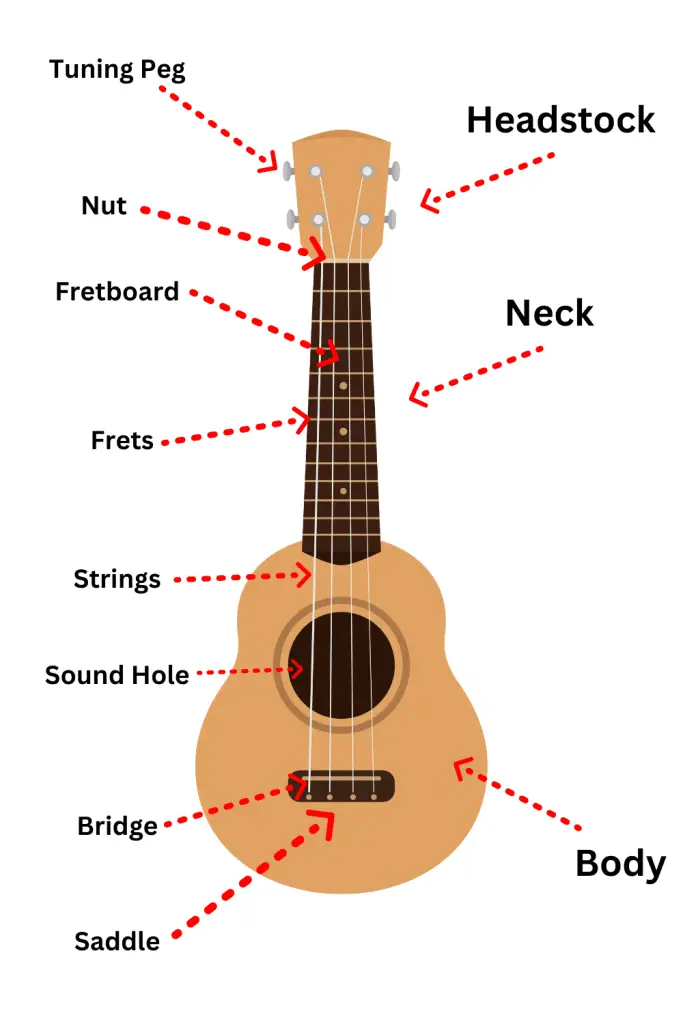
Where standard guitar tuning is EADGBE, A Ukulele is tuned in GCEA. The bridge and neck are built the same as an acoustic guitar.
So, here are the common parts of a Ukulele,
- Tonewood (Hollow wooden box)
- Fretboard
- Neck
- Bridge
- Nylon strings
- Tuners
Most Ukuleles don’t have a truss rod inside the neck.
Types of Ukulele
There are several types of Ukuleles that exist in the world. But the most common ones are the Soprano, Concert, Tenor, and Baritone of which the Soprano is the oldest and the most popular type of Ukulele.
Let’s discuss all types of Ukuleles from smallest to largest one.
First off,
Pocket Ukulele
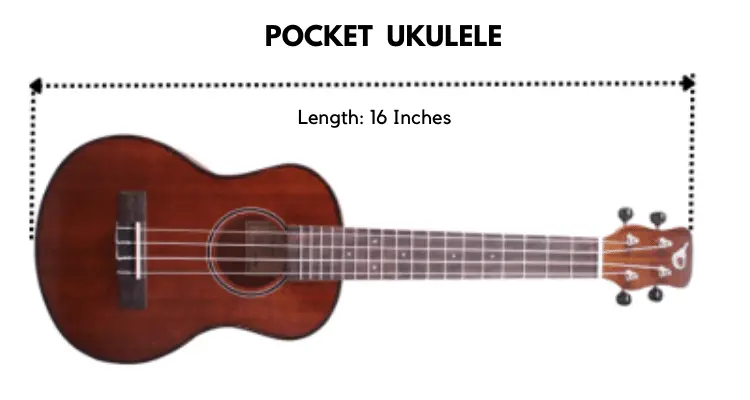
Pocket Ukulele also known as a piccolo, sopranino, sopranissimo, is the smallest type of Ukulele in the world.
It is not as popular as Soprano and Concert Ukulele, maybe due to its low sound But the smallest size makes it really a portable instrument to carry anywhere.
It is only around 16 inches long and you will get 10–12 frets on the fretboard. The standard tuning for this Ukulele is D5 G4 B4 E5.
So, the chords and scales shapes are also different from the Soprano and Concert Ukulele.
Soprano Ukulele
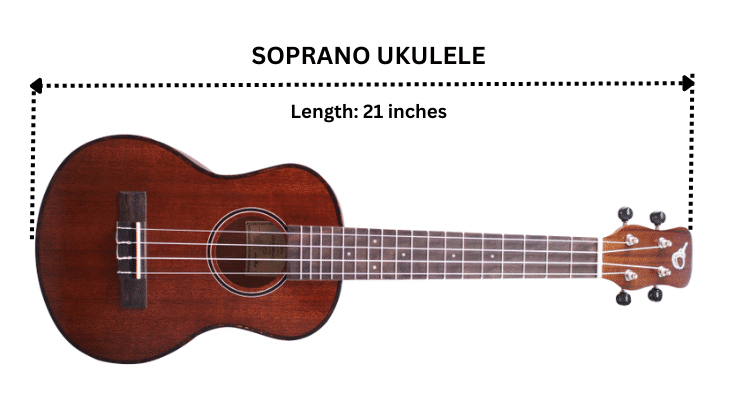
Soprano Ukulele is the standard size and the oldest Ukulele type.
It is only 21 inches long and secured the place for the second smallest Ukulele size. As it’s the oldest type and its size is also very compact, both helped it to become the most popular type of Ukulele.
Soprano Ukulele has 12–15 frets on the fretboard.
Soprano Ukulele is tuned in standard Ukulele tuning G4 C4 E4 A4 and Nylon strings are used in this.
Nylon strings don’t add more pressure on the neck that’s why there is no truss rod used in this type of Ukulele.
Soprano Ukulele has a mild tone which gives it a unique sound and that’s why it got so popular in recent years.
Concert Ukulele
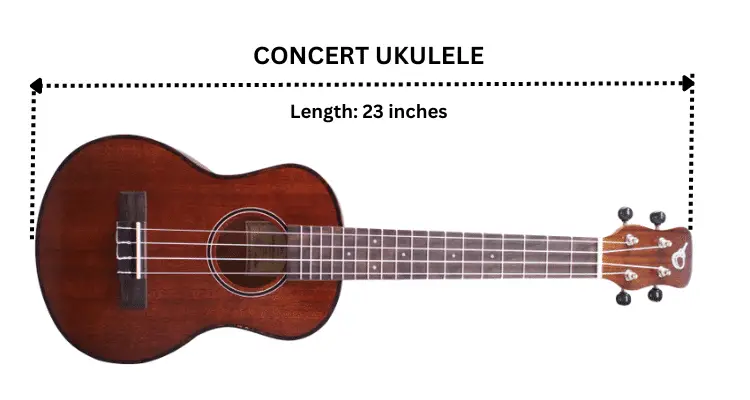
Concert Ukulele is the second most popular Ukulele type among music enthusiasts. It is around 23 inches long that’s made it a compact size Ukulele.
If you are a beginner then a “CONCERT” is an ideal Ukulele type for you.
With 15–18 frets, it has a bit bigger fretboard compared to Soprano Ukulele which is definitely easier for a beginner’s hand.
Concert Ukulele was developed in the 1920s as an enhanced version of the Soprano Ukulele.
It gives a slightly bright, mid-range, and deeper tone which is actually good for a lead instrument. That’s why the name is Concert Ukulele.
Concert Ukulele is also tuned in standard G4 C4 E4 A4 tuning.
Read also,
Tenor Ukulele
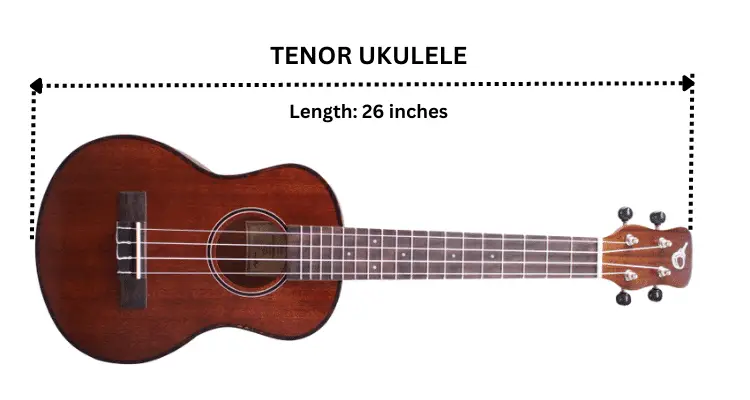
Tenor or taro patch or Liliu Ukulele is 26 inches long. It produces a fairly bright tone like Concert Ukulele but it covers the range from 200Hz to 1300Hz.
This is due to its larger fretboard which gives you 17–19 frets.
There are two types so fo tuning used in tenor Ukuleles ie; G4 C4 E4 A4 (“High G”)
G3 C4 E4 A4 (“Low G”).
If you are a beginner then Tenor Ukulele is one of the ideal Ukulele types for you. It provides you with wider spacing between the frets and strings which helps in the fingerpicking chord progression.
Baritone Ukulele
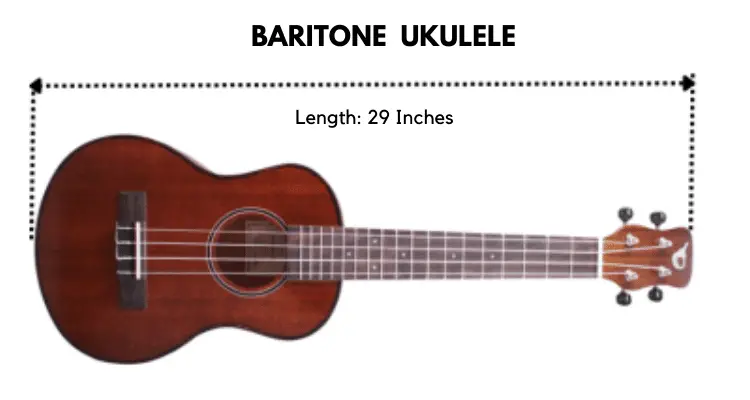
Baritone Ukulele is also known as bari, bari uke, or taro patch. These alternative names are popular in the Hawaiian region.
It is around 29 inches long.
The fretboard has 18–21 frets and the standard tuning for this type of Ukulele is D3 G3 B3 E4 which is the same as guitar tuning.
It produces a bit deeper and low-mid tone and covers from 150Hz to 130Hz. It is also used as a lead instrument but is not as popular as other versions.
Very few Baritone strings have steel strings and truss rods but most of the Baritone Ukulele brands have nylon strings.
Bass Ukulele
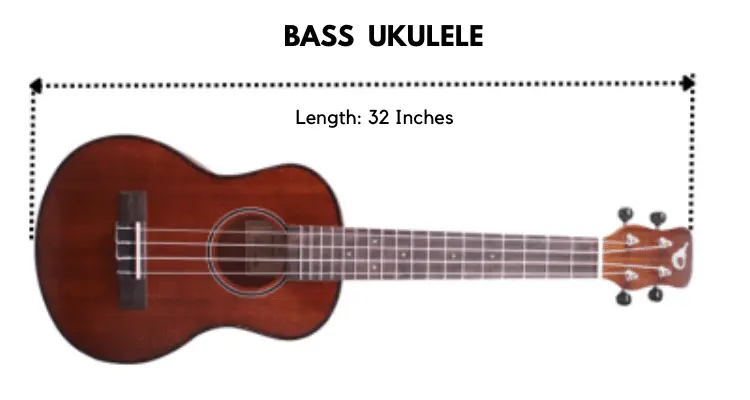
Bass or U Bass is also known as Rumbler. It is the largest one (32 inches) in the Ukulele family.
But it has only 16 frets on the fretboard. Obviously, because it is used as a Bass Ukulele. Bass Ukulele or U Bass is used to complement the lead instruments just like a Bass guitar.
However, its sound can be listened to with bare ears like acoustic bass guitars.
Electric Ukulele
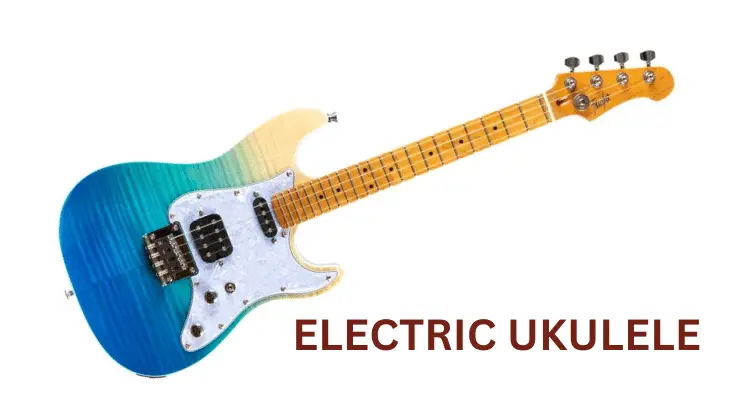
Electric Ukulele is nothing but comes with magnetic pickups to amplify and record the sound with an amplifier and recorders.
The first magnetic pickups were used in tenor ukes by Gibson company in 1949. Soon it gained popularity and Gibson started installing magnetic pickups in other types.
One type of Electric Ukulele is built as electric guitar which does not have a hollow body however, they are not as popular as the electric guitar.
Magnetic pickups are generally used below the hollow body to make it Electric Ukulele.
Difference Between Ukulele and Other Instruments
Ukulele Enthuasists often think that Ukulele is similar to Guitar and other stringed instruments. Although, it’s not.
There are some key differences between Ukulele and other stringed instruments that you should know about.
First off,
Guitar Vs Ukulele

Guitar is the most compared instrument to the Ukulele. Well, I know, they look similar in shape but they are not similar.
Here are the differences between a Ukulele and a Guitar.
- Ukulele is smaller in size. a Standard Soprano Ukulele which is the most popular one is only around 21 inches long whereas a standard-size guitar is around 40 inches long.
- Most Ukuleles have Nylon strings but Guitars have Steel strings (Nylon guitars are exception).
- Most Ukuleles don’t have truss rods like guitars.
- The tone of the Ukulele is mild and soft whereas Guitar has a bright and Mid-range tone.
Banjo Vs Ukulele

Oftentimes people compare Ukulele with Banjos, however, both are completely different instruments.
- A Standard Banjo has a tambourine-like body which is fixed with a hoop and screws that secure the vellum belly.
- It has five metal strings tuned in G, D, G, B, D.
- Four strings are tuned from the head and the fifth is fastened to a screw midway in the banjo neck.
- You need a plectrum to play Banjo and it’s generally used as a lead instrument.
Mandolin Vs Ukulele

Mandolin and Ukulele however look the same but the function and playing style is totally changed.
- Such as, Mandolin is generally plucked with a pick.
- A typical Mandolin comes with a total of 8 strings of which doubled strings are tuned in unison. Therefore, you have to pluck double strings in a single strike.
- All the unison strings are tuned in the same scale. The standard Mandolin tuning is G3, D4, A4, E5.
- Mandolin produces a bright high-mid tone like the 1st and 2nd strings of the guitar.
Violin Vs Ukulele

Violin also looks like a Ukulele however their characteristics are different.
- A Bow is used to draw across the strings which produce a synth-like sound.
- Violin doesn’t have frets that are why the neck is called a fingerboard.
- The player has to hold the strings by the fingers on the fingerboard. So, scales are self-defined.
- The player has to hold the violin between the jaw and the collarbone and hold the neck with the left hand. This hand is also used to hold the strings.
- There are 4 strings used in Violin made from a variety of materials including catgut (sheep intestine), nylon, and steel.
- The bow is made of horsehair which draws on the strings to produce sound.
Common Ukulele Tunings
Ukulele is tuned in several scales but the standard tuning is G4 C4 E4 A4.
Here is the standard and alternate tuning for all types of Ukuleles.
| Type | Standard Tuning | Alternate Tuning |
|---|---|---|
| Pocket Ukulele | D5 G4 B4 E5 | C5 F4 A4 D5 |
| Soprano Ukulele | G4 C4 E4 A4 | A4 D4 F♯4 B4 G3 C4 E4 A4 |
| Concert Ukulele | G4 C4 E4 A4 | G3 C4 E4 A4 |
| Tenor Ukulele | G4 C4 E4 A4 G3 C4 E4 A4 | D4 G3 B3 E4 A3 D4 F♯4 B4 D3 G3 B3 E4 |
| Baritone Ukulele | D3 G3 B3 E4 | C3 G3 B3 E4 |
| U Bass | E1 A1 D2 G2 | D1 A1 D2 G2 |
Playing Techniques for the Ukulele
The are multiple playing techniques that exist for Ukulele. But the most common one is fingerpicking.
Fingerpicking

Fingerpicking is the most used picking technique for Ukulele. In this technique, the thumb is used to pick the first(upper) string, the Index finger for the second string, the Middle finger for the third string, and the ring finger for the fourth string.
The finger position will be as shown in the image below.
Rarely, but a pick is also used to strum the Ukulele. These picks are specially made for nylon strings. A typical guitar pick is hard and made of steel strings, and may break the nylon ones.
Ukulele picks are soft and ideal for Ukulele. However, picks are rarely used for picking Ukuleles.
Strumming
There are several fingerpicking strumming techniques used to strum the Ukulele.
Some common Ukulele strumming techniques are,
- Down-up-down-up: D-U-D-U-D-U-D-U
- Down-down-up: D-D-U (3/4 time)
- Down-up-down: D-U-D-D-U-D (eighth-note triplets)
- Down-up-up-down: D-U-U-D-D-U-U-D
- Down, Down, Down Up Down: D-D-U-D
One of the famous Ukulele strumming patterns is The Flamenco Rumba. In this pattern, both the body and the strings are used to create a beat.
You can watch this video to learn more about this strumming pattern.
Famous Ukulele Players
- Jake Shimabukuro
- Israel Kamakawiwoʻole (1959–1997)
- James Hill
- Eddie Kamae (1927–2017)
- Genoa Keawe (1918–2008)
- Daniel Ho
- George Harrison (1943–2001)
Conclusion
Ukulele has become popular in recent years due to its wide use in songs and concerts.
It has a golden history and a bright future. For those who want to learn stringed instruments, it’s one of the easiest ones to start with.
And, if you already have a Ukulele then you are good to go.
Let me know in the comment box if you have any questions regarding Ukulele. I will answer all your questions.
Happy Ukulele Playing…
